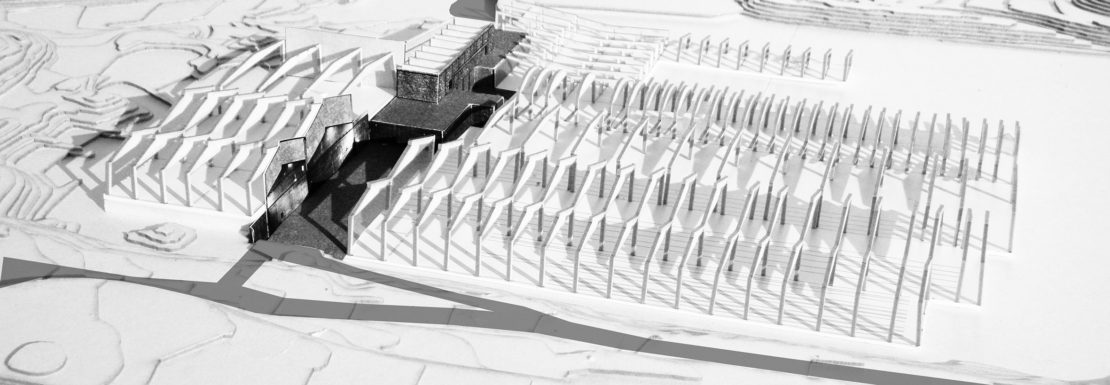Recycling Almar
Juan Moreno


Build
To make or become stronger or more intense.
“The path of temporality would barely leave more trace than aging
flesh if it was not useful to nourish our relationship with
space”, – writes Emilio Lledó. He clarifies that it is here
where man has managed to capture its presence in the real world,
as well as language giving form and content to the ideal world.
Our presence leaves its mark; a footprint that breathes more
slowly. It follows its own beat even if the housing bubble burst,
dragging standards and evicting functions, as in Almar, the old
factory building of ceramic material. The once gleaming industrial
infrastructure has become obsolete.
The factory is located at a strategic point for territorial
recovery. It is part of a communications system connecting two
existing routes in the Vallès: the biological corridor and
greenway. Traces that already suggest the binding intention of the
land. The proposal is the connection of the two natural parks of
Collserola and Sant Llorenc del Munt by a cycling network that
complements the existing forest and agricultural area. Resistance
and defence against urban sprawl by its own fabric. Time suggests
the need to continue over the indelible mark of speculative
actions of the territory. Although the past will always be ours,
it is no longer what it was. Inevitably, a new perspective arises
that changes the sequence of actions. Among injecting and
reconverting, there are an infinite amount of actions possible.
While the first speaks about osmosis between the old and the new;
the second offers us the past as material for kick-starting future
possibilities. Warehouses are studied from various levels to
propose an infrastructure that can grow as needed. Meanwhile, the
action is concentrated on a narrow strip, allowing the effect to
multiply. The prefabricated concrete structure of the original
warehouses is reinforced for the new ramp that descends, defining
a space that will become the central atrium of the project.
We can not control the effects of time but we can limit the decay
by finding the true nature of the materials. In Almar, our
accomplices are now topography, warehouses and clay. Soil, already
transformed since it is also a clay source, had an industrial
value that the proposal uses to place a bike park. The warehouses
are considered a disposable material once the activity for which
they were conceived disappears. They are the fossilized imprint
for the future. Time as matter is forgiving and unifying. It does
not let us forget but allows us to move forward. Clay is a pact
with it, end and beginning. With the material stock left without
output, we will build new volumes. The cosmopolitan nature of the
proposal for Almar is the ability to fluctuate between new and
known. A previously imperceptible link between their fragmented
qualities that lets new life arise. Colonizing or building is to
choose between invasion or respect. Build is not a dirty word. It
lives sheltered in its inviolable definition, which speaks about
strength and intensity. So happens always, someone holds out a
hand in a gesture that is not appreciated in this moment of time,
but it will last longer than we could imagine. Building is a verb
that has spent years seeking refuge, and now descends slowly the
ramp of Almar or, unaware of the disaster surrounding it, pedals
over the old quarry.
Text: Paula Bozalongo
Credits
Recycling Almar
Authors:
Juan Moreno Romero, Siddartha Rodrigo Clua y Francesco Miele
2016
